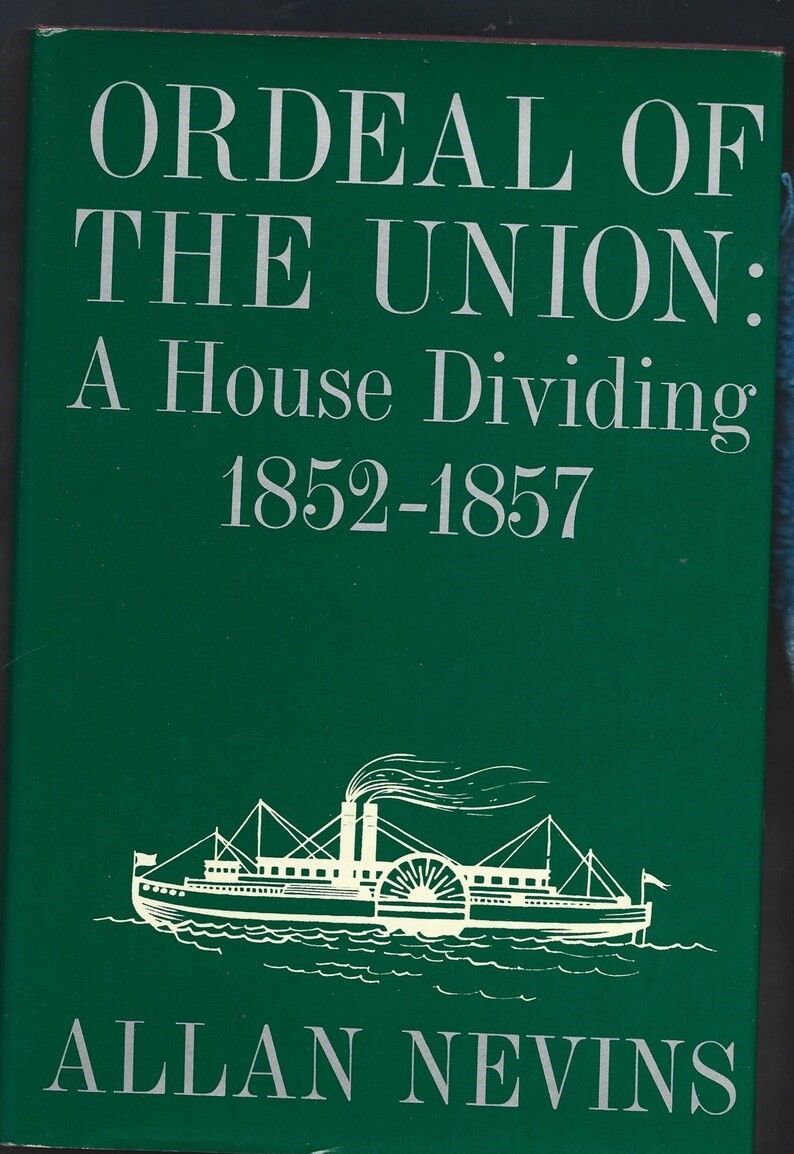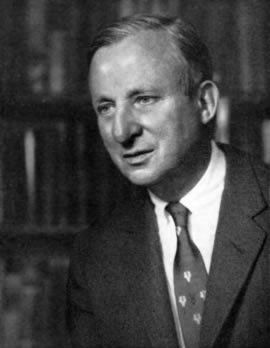Allan Nevins: The Future of the Past

Book cover of Vol. 2 of the series, Ordeal of the Union by Allan Nevins, published in 1947. (Courtesy of Google Books)
After ten years of teaching and twice winning the Pulitzer Prize for biography, Allan Nevins called himself “an amateur in history” even though he was the Dewitt Clinton Professor of American History at Columbia University. He wrote that his “affection for history” began in “an Illinois farmhouse,” near Camp Point, Illinois, on “rainy days that meant a relief from labor.” His parents had provided a “sizable and austerely serious” home library of more than 500 books.
In 1938 he regretted “the widespread indifference to history” and wrote The Gateway to History to emphasize the importance of history to contemporary world issues. He discussed historians he considered good writers and taught a course on the methods historians use in their work. He wished more people read history and “that more of them did so with feeling and passion, not as a means to a limited end.”
His words are prescient for our nation’s recent controversies about teaching history in public schools and colleges. Nevins would certainly be cautious in any criticism of history curricula, but he would welcome judicious debate about the past and encourage deeper study of controversial events and people overlooked in standard textbooks.
He considered himself an “amateur” historian because he loved the study of the past, but still regarded himself as an outsider among historians. Without earning a Ph.D., he held an endowed chair at an Ivy League university, and from his wealth as a writer, anonymously endowed a faculty position which became the Allan Nevins Chair in economic history at Columbia. He argued that academic history was often “dryasdust” and became a founder of American Heritage, which published articles only by expert historians who were fluent writers. The magazine met immediate success with a large readership, although in recent years it has shifted to an online edition.
He met opposition from academics who complained that he encouraged popularization of historical scholarship. He had provoked sharp controversy in a 1939 Saturday Review of Literature article entitled, “What’s the Matter with History?”, in which he lamented “another thin and disappointing year in American historical writing,” with no book “which could be called distinguished in the highest sense of the word” or might “attain a really wide reading public.”
He praised earlier books like Walter Prescott Webb’s The Great Plains, Claude Bowers’s Jefferson and Hamilton, and Van Wyck Brooks’s The Flowering of New England. Webb was a professor at the University of Texas, but Bowers and Brooks were, as Nevins had been, journalists or independent writers
Nevins wanted to introduce a broader reading public to good scholarship, and his newspaper experience writing for that audience reinforced his instinct. He probably shocked some academic colleagues when he praised another “amateur” --Carl Sandburg-- as “a great historian who is also a finished artist” and whose four volumes about Lincoln and the Civil War presented “perhaps the best picture we have of a people in wracked travail yet written by any pen.”
In 1939, Nevins was a founder of the Society of American Historians, with an invitation-only membership of historians who “identify and celebrate distinguished historical writing.” The Society presents an annual Allan Nevins Prize to a graduate student whose history dissertation is published.
Apart from his writing, Nevins’s legacy is notable for the Oral History Research Office he established at Columbia in 1948. He recognized that twentieth century technology—the telephone and the radio—were displacing letters and diaries as the media preserving historical events. He proposed interviewing prominent people and preserving via tape and transcript their opinions and recollection, thereby providing “a fuller record of their participation” in the “political, economic and cultural life of the last sixty years.” Today, known as the Columbia University Center for Oral History, it offers a master’s degree in oral history and trains students in method and theory.
Nevins was not the originator of oral history. After Paul Revere took his “midnight ride in ‘75” to warn the countryside that British troops were marching, a Congregational minister, William Gordon, had interviewed Revere and participants in the battles of Lexington and Concord. Gordon’s subsequent essay contradicted stories that the battles began after unprovoked attacks by British soldiers, and American leaders suppressed his report.
During the 1930’s the Works Progress Administration employed writers to interview former slaves about life in the pre-Civil War South, and those records preserved 10,000 pages of testimony which later altered historians’ views of slavery. During World War II President Franklin D. Roosevelt directed the military to write narratives of such events as the D-Day invasion. One prominent study in this series was The Battle of Leyte Gulf, by Nevins’s friend and fellow historian, C. Vann Woodward, who had served as a naval officer in the war’s Pacific Theatre.
Nevins’s success and prominence among historians has not insulated him from criticism. There is now an Oral History Association and its president-elect, Prof. Daniel R. Kerr of American University, wrote an influential 2016 article entitled “Allan Nevins Is Not My Grandfather: The Roots of Radical Oral History Practice in the United States.” He challenged what he called “an original fixation on elites and archives” and urged a broader scope that is “more democratic, theoretically sophisticated, and ethically grounded.” Kerr had participated in the Cleveland Homeless Oral History Project in 1996 and urged contemporary investigators to interview immigrants and factory workers.
Undoubtedly Nevins’s early vision of oral history emphasized interviews with prominent people—of whom he had become one--- about the stories they wanted preserved. What is now called social history—the experiences of tenement dwellers in New York City, cowboys in Texas or schoolteachers in Ohio—was mostly ignored by colleges and publishers. But Allan Nevins would likely agree that those voices should surely be preserved. His family, after all, had farmed 220 acres in Adams County, Illinois, "every inch" of which, he recalled, "was at one time or other moistened by my sweat" because, in the values of that community," work was a very good thing for a growing boy."
Sources
Huftt, Jane Wolf and Anne Nevins Loftis. “Reports of a Downstate Independent: Excerpts from the Letters of Lewis
Omer to Allan Nevins, 1930-1953.” Journal of the Illinois State Historical Society, Vol. 81, No. 1 (Spring, 1988), pp. 25, 26.
Kerr, Daniel R., “Allan Nevins Is Not My Grandfather: The Roots of Radical Oral History Practice in the United
States.” The Oral History Review, 43:2, 367, 368, 369 (2016).
Nevins, Allan, The Gateway to History, (New York, 1938) iii.
Nevins, Allan. “What’s the Matter with History.” Saturday Review of Literature (February 4, 1939), 3.
Nevins, Allan. “Sandburg as Historian.” Journal of the Illinois State Historical Society (Winter, 1952), pp. 361,
366, 368.
Ritchie, Donald A., Doing Oral History: A Practical Guide, 2nd. Ed. (New York 2003), 22.







